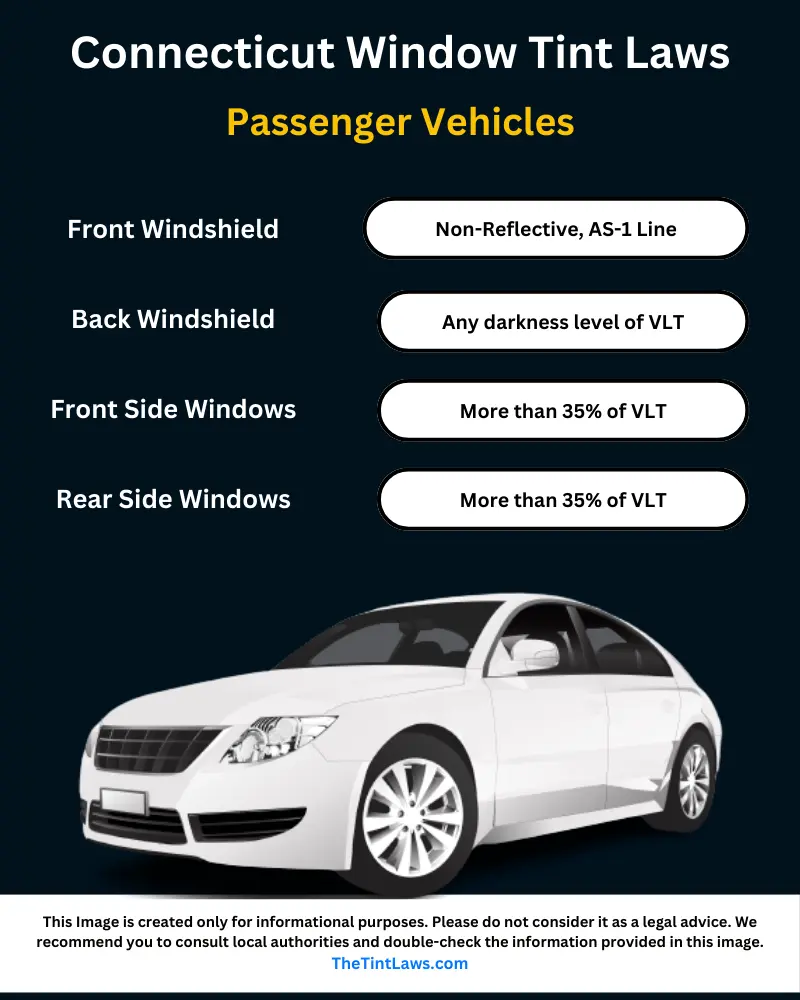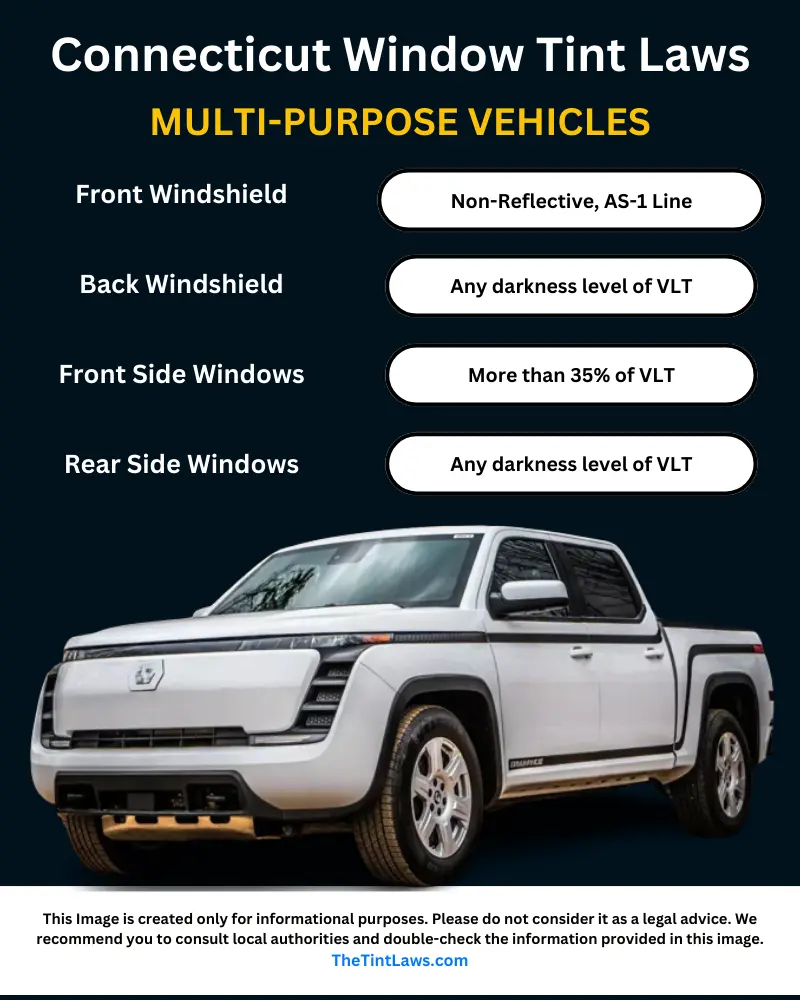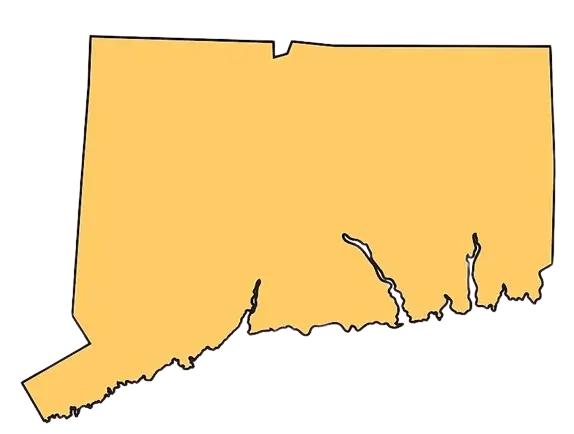Connecticut tint laws were enacted in 1994. The darkest legal tint limit in Connecticut is 35% VLT for the front side windows, and 35% VLT for Backside windows according to the window tint laws in Connecticut State.
How Tint Percentage is Measured by the Connecticut Tint Laws?
The legal tint of darkness is measured by Visible Light Transmission (VLT), which indicates the percentage of light that passes through the film.
Here’s a breakdown of the legal VLT limits for different types of vehicles.
Legal tint darkness for sedans:
- Windshield: Only non-reflective tint is allowed above the manufacturer’s AS-1 Line.
- Front side windows: More than 35% of VLT should be allowed.
- Backside windows: More than 35% of VLT should be allowed.
- Rear window: Any darkness level is permitted.

Legal tint darkness for SUV and Van:
- Windshield: Only non-reflective tint is allowed above the manufacturer’s AS-1 Line.
- Front side windows: More than 35% of VLT should be allowed.
- Backside windows: Any darkness level is permitted.
- Rear window: Any darkness level is permitted.

Important Note: It’s crucial to remember that these are the minimum VLT requirements. You can have a lighter tint (higher VLT percentage) as long as it meets the legal limit. However, anything darker than the specified VLT is considered illegal.
Window Tint Reflection in Connecticut:
Connecticut tint law allows a certain percentage of tint reflection for all types of vehicles.
Tint Reflection for sedans:
- Front side windows: It should not be more reflective than 21%.
- Back Side windows: It should not be more reflective than 27%.
Tint Reflection for SUV and Van:
- Front side windows: It should not be more reflective than 21%.
- Back Side windows: It should not be more reflective than 27%.
Connecticut Window Tinting Rules and Regulations:
- Side mirrors: Both side mirrors are required in case of a tinted rear window.
- Restricted Colors: There is no restriction for using any tint color by the Connecticut car tinting laws.
- Stickers: A tint certification sticker for legal identification must be placed on each tinted window between the window glass and tint film.
- Certificates: Manufacturers of window film must certify the film they sell in the state. Ensure your tint installer uses certified tinting film.
- Tint Variance: A 3% tint variance is allowed.
- Window tint exemptions: Connecticut tint laws allow Individuals with certain medical conditions a medical exemption from tint restrictions.
- Penalties: Non-compliance with Connecticut’s window tinting laws can result in a traffic citation. It’s important to note that specific regulations may vary between counties.
Tint laws reference: General Statutes Connecticut – Chapter 246, Section 14-99g
Information about Connecticut State
Connecticut, a New England state, blends coastal cities with charming rural towns. Known as the “Constitution State,” it boasts historic sites, world-class universities like Yale, and stunning natural beauty.
Connecticut State borders with Massachusetts, New York, and Rhode Island. Connecticut is the 3rd smallest US state by land area and the 29th most populous state. The largest city in Connecticut State is Bridgeport.

Capital
Hartford
Population
3,617,176 (2023)
Area
5,018 mi2 (13,023 km2)
Cities in Connecticut State
Bridgeport, Stamford, New Haven, Hartford, Waterbury, Norwalk, Danbury, New Britain, Bristol, Meriden, Ansonia, Shelton, Torrington, Middletown, Norwich, Groton, West Haven, Milford, Stamford, Greenwich, Naugatuck, Derby.
Counties in Connecticut State
The State of Connecticut is divided into 8 counties.
Fairfield, Hartford, Litchfield, Middlesex, New Haven, New London, Tolland, and Windham.